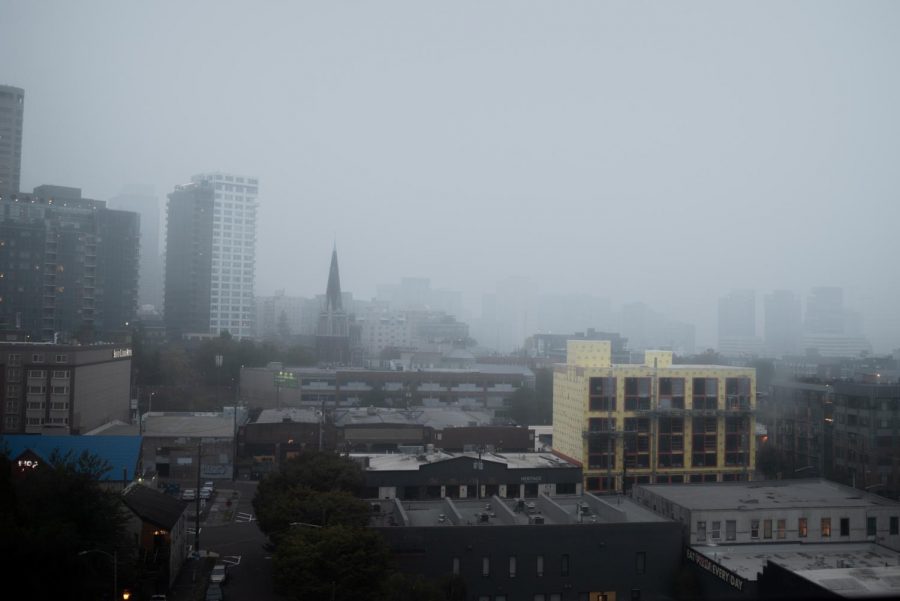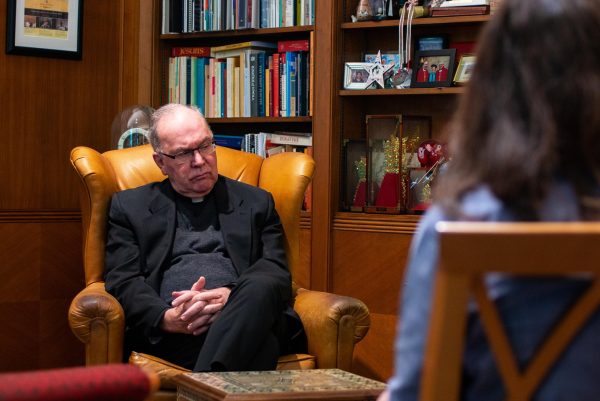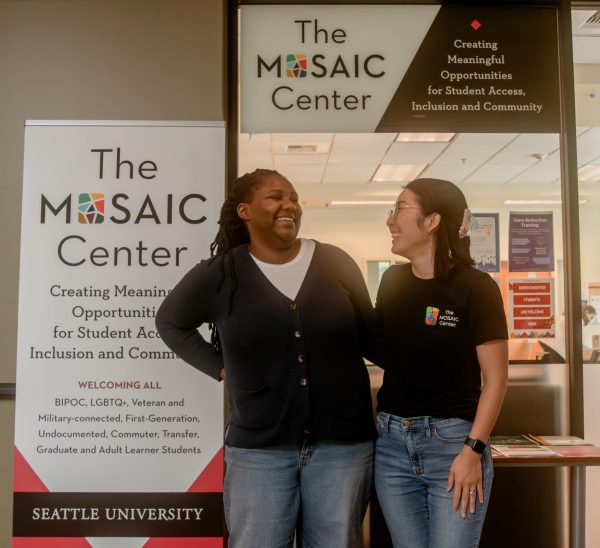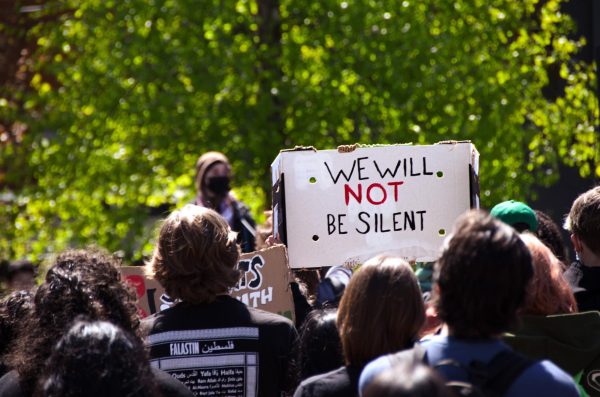West Coast Wildfires Raise New Concerns Amid Pandemic
In North America, many western areas experience the risk of wildfires—particularly between the months of August and November. The 2020 wildfire season started with intense fires in several states. Since the middle of August, this wildfire season has continued to devastate California, Oregon and Washington.
So far, over five million acres of land have burned and tens of thousands of people were forced to evacuate their homes. Some of the most destructive fires on the West Coast have occurred this year, including the August Complex and LNU Lightning Complex fires in California. In central Washington, the Pearl Hill Fire burned over 223,000 acres across Douglas County.
On Sep. 8, smoke blanketed the Seattle area and caused unhealthy air conditions throughout the Pacific Northwest. The Air Quality Index, a scale used by the Environmental Protection Agency to report daily air quality, considers five major air pollutants to determine the index value.
The AQI scale runs from 0-500, in which a higher value translates to greater levels of air pollution and health concerns. According to AirNow.gov, Seattle had an AQI value of 275 on Sept. 14—placing it in the “very unhealthy” category.
Exposure to wildfire smoke can irritate the eyes and respiratory system, as well as worsen chronic heart and lung diseases. Certain groups are at a greater risk when the air quality is hazardous.
According to the Centers for Disease Control and Prevention (CDC), elderly, children and people with heart or lung diseases are most impacted by poor air quality. The CDC recommends that people regularly check local air quality reports, keep windows and doors closed, run an air conditioner and avoid activities that increase indoor pollution such as burning candles and vacuuming.
Over the years, climate change has led to hotter and drier conditions, which are conducive to wildfires. Seattle University is actively trying to slow the effects of climate change through the Climate Action Plan.
In 2009, Seattle U adopted the Climate Action Plan as a signatory to the American College and University Presidents Climate Commitment. This commitment requires Seattle U to complete annual emissions inventories, take steps to reduce greenhouse gas emissions, integrate sustainability into curriculum and set a target date and interim milestones for reaching climate neutrality.
Professor of Civil and Environmental Engineering and Director of the Center for Environmental Justice and Sustainability (CEJS), Phillip Thompson, spoke on Seattle U’s greenhouse gas emission reduction progress.
“We set a goal of reducing our 2009 levels by 12% by 2020, and we have beat our goal with a 16 percent reduction,” Thompson said.
It is also important for students to do their part to curb climate change.
“Students can be mindful of their overall consumption, which includes using more public transportation, eating less meat, [and] purchasing locally produced goods,” Thompson said.
CESJ has compiled a list of tips and resources for sustainable living to help students become more conscious of their carbon footprint and learn about sustainable lifestyle changes.
Environmental issues disproportionately affect minoritized groups, and that is no different in the case of wildfires.
“The homeless population in Seattle is particularly vulnerable to poor air quality, as it is difficult for them to seek refuge,” Thompson added.
King County officials proposed an assessment and recovery center for COVID-19 relief to serve as a temporary smoke shelter for people experiencing homelessness.
Since the onset of the COVID-19 pandemic, outdoor activities have been an escape from the confines of quarantine. However, the smoke and unsafe air quality forced many inside and prompted the question of what comes next.
For many first-year students, the first few weeks on campus are spent exploring the city and meeting new peers. However, the hazardous air quality compounded with COVID-19 restrictions made this nearly impossible.
Yvette Arzaga, a first-year diagnostic ultrasound major, explained how the poor air quality disrupted her plans.
“I originally wanted to learn about the city by walking around and visiting different places, but I stayed indoors to protect my health,” Arzaga said. “It also made hanging out with friends or meeting people harder because we couldn’t congregate inside due to social distancing.”
Despite the obstacles, Arzaga was able to find ways to make the most of her first few weeks at Seattle U, both socially and athletically.
“The use of library spaces made it possible to see friends in a group setting,” Arzaga said. “I chose alternative exercises that didn’t involve jumping or running to accommodate my space.”
For Seattle U athletic teams, the hazardous air quality made an already abnormal season even more difficult. Lauryn Hepp, a senior biology major and captain of the women’s rowing team, spoke to the changes that were made.
“Since the AQI was so high, we had to move practices indoors. Our coaches had to adapt quickly and create a new plan for us, and we were able to practice in our normal pods at the Redhawk center,” Hepp said. “Normally, we have people running, erging, biking and lifting while incorporating circuits. However, because the air was so bad, we had everyone who would normally be on the water inside and we had to limit our workouts to just erging.”
The cross country team, another sport which relies extensively on the outdoors for their training, also had practices abruptly altered. Lance Mason, a sophomore business major and men’s cross country runner, discussed the team’s transition to indoor practices.
“We have little groups that we call pods that we run with. Before the smoke, we were just doing easy running with members of our pod,” Mason said. “When the smoke hit, we obviously couldn’t run because it would be very unhealthy. We were granted access to the Redhawk Center, where we could use the bikes. We would go in groups of five socially distanced, and then we made sure to wipe down our equipment before and after.”
Despite the setbacks, the team has their eyes on the future.
“A couple days ago, the NCAA announced that they were going to have a winter cross country championship. We’ve got four months to prepare for it, so it’s like an extra boost of confidence. We’ve got all this time to prepare, and we’ve got something to work towards. The excitement levels are definitely up,” Mason said.
Beyond student life at Seattle U, the wildfires also impacted wildlife. Mark Jordan, Associate Professor of Biology, discussed the impact of wildfires on wildlife habitats in Washington.
“Many species in Washington depend on the same forests that are susceptible to catastrophic wildfires,” Jordan said. “Wildlife agencies have been particularly concerned about the impact of fires on lynx habitat.”
In addition to habitat damage, the wildfires also contribute to poor water quality.
“Burned slopes don’t hold the soil as well, so streams and lakes can get filled with sediment during the following spring thaw, and this will more negatively impact water quality than the smoke and ash during the fire,” Jordan added.
While the wildfires have devastating effects, they are a natural part of many forest ecosystems.
“It’s not the presence of the fire that negatively impacts wildlife but the intensity of the fires,” Jordan said. “Because we are seeing hotter and larger fires, and we are getting more fires in forests that are not as dependent on fire, such as in the Olympic mountains, more species are being exposed to these risks in areas that are not adapted to frequent fires.”
As the country approaches a historic presidential election this November, climate change is one of many topics on people’s minds.
Bridget Benevides, a senior nursing student, expressed concern for significant change regarding environmental policies.
“It is important for us to recognize that these yearly fires are not coincidental, but a product of climate change, and the government should be doing more,” Benevides said. “We have the opportunity to make climate action a priority by educating ourselves, engaging others in conversations about climate change, and voting for candidates who support the Green New Deal in November.”
In an already abnormal school year, Seattle U students have been resilient and made the most out of the current conditions. While the smoke has subsided within Seattle, wildfires continue to ravage parts of the West Coast.
The increase in wildfires have brought more attention to the pressing issue of climate change during an already stressful time due to the COVID-19 pandemic. Americans will need to make important decisions in the coming months—and years —for the well-being of humanity and the planet.











